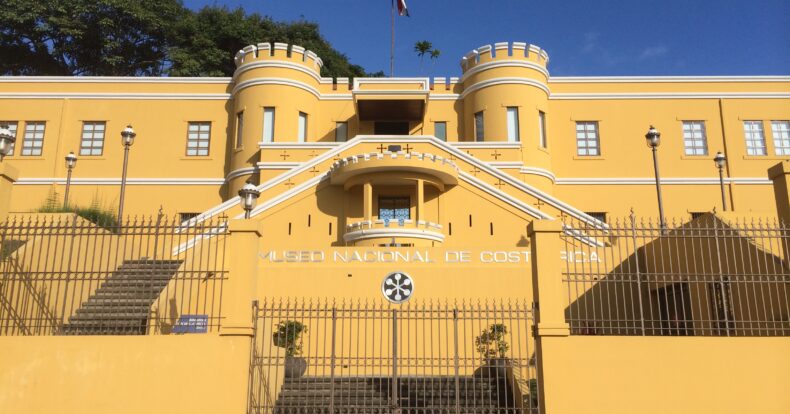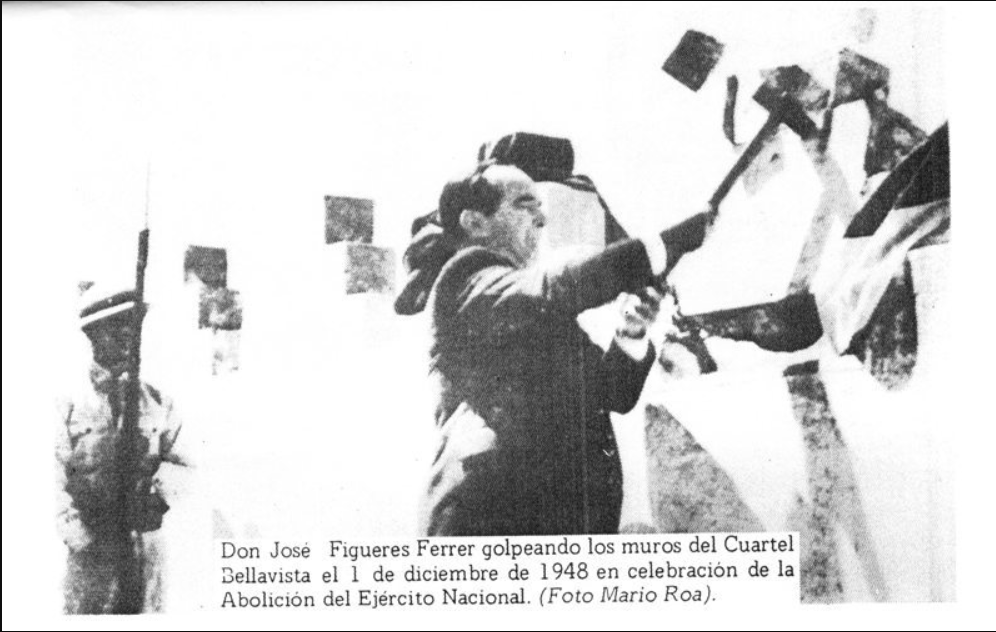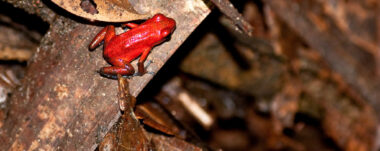The (former) Cuartel Bellavista

The Cuartel Bellavista, former headquarters of the now abolished Costa Rican Army.
The building of the current National Museum of Costa Rica was the headquarters of the Cuartel Bellavista, the country’s military barracks. The history of this famous building is closely linked to the civil war and the abolition of the army in 1948.
The Bellavista Barracks was a place of military instruction for recruits, who were trained in tactics, weapons handling, discipline and moral principles.
Beginning of the construction of Bellavista barracks
The construction of the Cuartel “Buena Vista” or “Bellavista” began in 1917, promoted by the dictator Federico Tinoco. He launched the strengthening of the military institution after the coup d’état he gave to the then president Gonzalez Flores.
In 1917 the external walls and towers designed by architect José Francisco Salazar were built. The east sector and the lower part of the south and possibly the north sector were built. In the northwest, the old house of Mauro Fernández, a national education reformer, was maintained.
When the Tinoco regime fell in 1919, the construction of the Cuartel came to a standstill in 1923. Work resumed in 1928 with the completion of the west and south sectors of the building and the demolition of a large part of Don Mauro’s house.
Apparently, the continuation of the work in the 1930s was in the hands of José María Barrantes, who took up the plans drawn by Salazar and redrew them.

After the war of ’48
After the annulment of the 1948 presidential elections by then president Calderón Guardia, in which Otilio Ulate was supposed to have won, José Figueres Ferrer initiated the revolution of 1948. Figueres then took power for 18 months before returning power to Ulate. During this transition, Figueres, instead of undoing what Calderon had started (the establishment of the Social Guarantees), decided to continue the work of his opponent and launch more socialist laws. This did not please the oligarchs. Cardona, who was then Minister of Security, wanted to carry out a coup d’état, known as the “Cardonazo” of 1949. Figueres, to prevent a new military conflict from happening again in the future, decided to abolish the army and give the building of the Bellavista Barracks to the National Museum.
In this process, the external walls, the southwest tower and the building’s tunnels were previously demolished.
The tunnels
In 2009, when the building was remodeled in the southwest sector, the remains of the entrance of one of the tunnels of the barracks were found. In view of the evidence, the Museum’s Department of Anthropology and History carried out excavations of the features, cleaned the central space of the tunnel and its brick walls, and found a possible control post, which was outlined in a plan from the 1930s.
Today, the building houses the National Museum with permanent collections and temporary exhibits that tell the story of Costa Rica’s history.
Author: M. Barrantes for Sensorial Sunsets
Sources
Navigate articles





